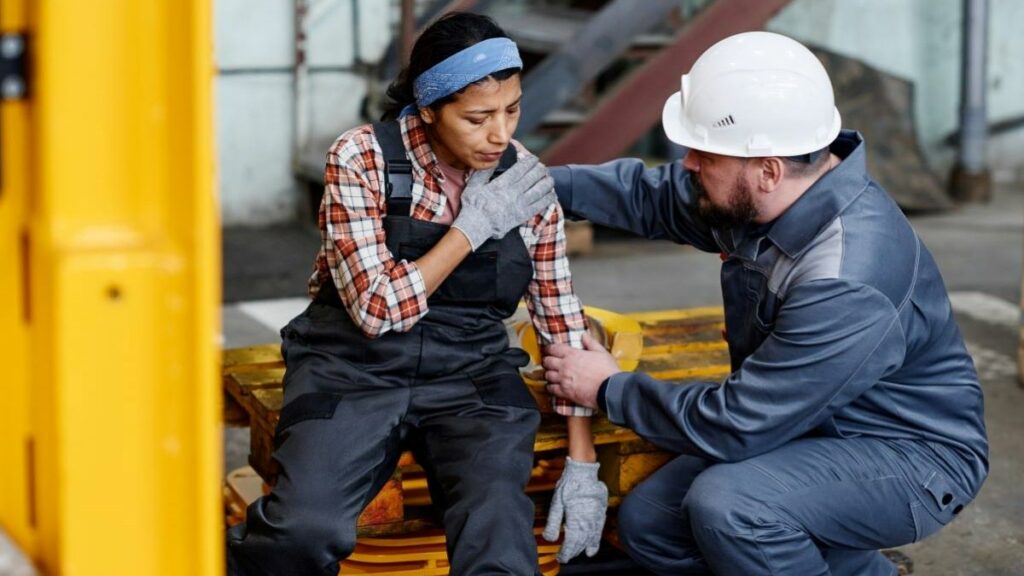Featured image by Pressmaster
When accidents happen at the workplace, it’s essential to take swift and decisive action. First and foremost, workplace accidents can be fatal. Some of them include sprains, broken bones, and inhalation of hazardous chemicals.
The first thing to do is to save a life if an accident occurs. There are safety principles that ensure the proper handling of workplace accidents. It’s important to understand how to respond to such accidents. As such, you preserve life and prevent further injuries. For more insights, here’s a guide on properly handling workplace accidents.
RELATED ARTICLE: SAFETY ISSUES FOR BUSINESSES WITH CUSTOMERS IN THE WORKPLACE
Know How to Attend to the Injured
Workplace accidents are typically stressful. When they happen, it’s essential to understand how to handle them. This depends on the nature of the injury.
In most companies, you’re trained to handle emergencies in your workplace. Attending to the injured includes applying some first-aid techniques learned during training. You’ll also learn how to respond to emergencies without causing further injuries. These training skills and techniques are helpful, especially if professional help is delayed.
After giving first aid to the injured person, it’s best to call for emergency and professional services. Before they get on-site, trained staff and personnel can take care of the injured by providing appropriate care services using the right equipment. On that note, you can check out this great site for insights on emergency medical solutions.
Alternatively, you can contact the nearest local hospital to come and take charge of the situation immediately after the accident.
Why Is It Essential to Secure the Scene of a Workplace Accident?
Once a workplace accident occurs, it’s best to find out what caused it and how it happened. To do so, you can make sure no one else is on the scene, then secure it. This process involves using caution tape to cordon off the area where the accident happened. It keeps the scene undisturbed and allows for preservation of evidence as to the cause of the accident.
Additionally, it can help you control the situation faster. For instance, if there was a fire at the place of work, it’s best to secure the place so you can get some key factors, such as what led to the fire, how it started, and how it happened. Securing the scene in a collapsed building site can help you account for every worker during the ordeal. It will also help with the rescue mission.
1. Conduct an Investigation
After securing the place, you must understand what caused the accident. Understanding the root cause helps you devise a strategy to avoid future accidents. The only way you’ll ensure it doesn’t happen again is if you identify the cause and enforce the appropriate mitigation measures.
You can ask witnesses questions that will shed light on how things unfolded. Again, if the victims are in a situation where they can recount the occurrences, their input also matters. It’s also important to hear their side of the story. Alternatively, you can use the evidence at the scene to understand the cause of the accident. An investigation is vital since it leads you to the next step.
2. Take a Risk Management Approach to Workplace Accidents
There are several causes of workplace accidents. Some of them include the following:
- Poor lifting techniques
- Low lighting
- Trips and falls
- Lack of protective gear
- Messy workplace environment or poor housekeeping
- Slippery floors
- Objects falling
- Improper footwear
Once you’ve established the cause of the accident, it’s important to reduce the probability of it occurring again. One of the ways to lessen accidents is by taking a risk management approach.
You can reduce several workplace injuries if you control the causes. You can come up with new policies to guarantee your workers’ safety. For instance, you can require every construction worker to wear a helmet. This way, you can avoid severe injuries in case of an accident.
RELATED ARTICLE: WORKPLACE INJURY? WHAT STEPS SHOULD EMPLOYEES TAKE?
3. Foster a Safe Working Environment
Accidents often occur in the workplace environment. Some jobs, such as mining, public transportation, logging, and construction, can be risky. One of the best ways to prevent workplace accidents is by fostering a safe working environment. It would be best if you made occupational health part and parcel of your workplace culture. Additionally, as outlined in Protex AI’s guide on behavioral safety culture, the establishment of a hazard identification process is of vital importance, contributing significantly to the prevention of hazardous accidents.
If you make it mandatory for employees to practice safety measures when working, you can be certain to reduce the rate of accidents. For instance, aside from using safety gear when working, train your staff to give first aid to their colleagues in the event of an accident. Remember, some accidents involve bleeding. With first aid, they might be able to stop someone from bleeding to death.
RELATED ARTICLE: HOW TO LOWER THE RISK OF YOUR DRIVERS HAVING TRUCK ACCIDENTS
Conclusion
Workplace accidents often occur, but you can reduce their probability of occurrence by incorporating several strategies. Be strict on their adherence and ensure everyone in the organization follows the rules. You can also incorporate strategies such as training your employees on handling emergencies in your safety procedures. This increases the response speed and reduces the likelihood of one of your employees losing their life from a workplace accident.
RELATED ARTICLE: INJURED ON SOMEONE’S PROPERTY AS A CONTRACTOR? WHAT’S NEXT
